Garden bed edging is like the perfect haircut for your landscape—subtle, polished, and powerful. It frames your flower beds, gives your lawn a crisp identity, and keeps things neat without shouting for attention. If you’ve ever walked through a garden and felt like everything just looked “put together,” there’s a good chance the bed edging was doing its job quietly in the background.
I’ve learned the hard way (after chasing mulch that wandered off into the grass) that proper edging isn’t just decorative—it’s functional. Whether you’re working with a sprawling backyard or a cozy patch of green, the right border can be the finishing touch that transforms chaos into calm.
1. Natural Stone Edging: Rustic Elegance Without Trying Too Hard

There’s something timeless about natural stone. It doesn’t scream for attention; it just sits there confidently like it belongs. And it does. Whether it’s slate, fieldstone, or flagstone, natural stone edges blend beautifully with flower beds, shrubs, and even vegetable gardens.
They’re not always uniform—some pieces are chunky, others slim. But that’s part of their charm. No two edges look alike, and that organic aesthetic often fits perfectly in cottage gardens or more free-form landscaping.
You can either stack them loosely for a casual feel or set them in mortar if you’re after something more permanent. Bonus? Stones are weather-resistant and basically maintenance-free.
2. Metal Edging: Sleek and Understated
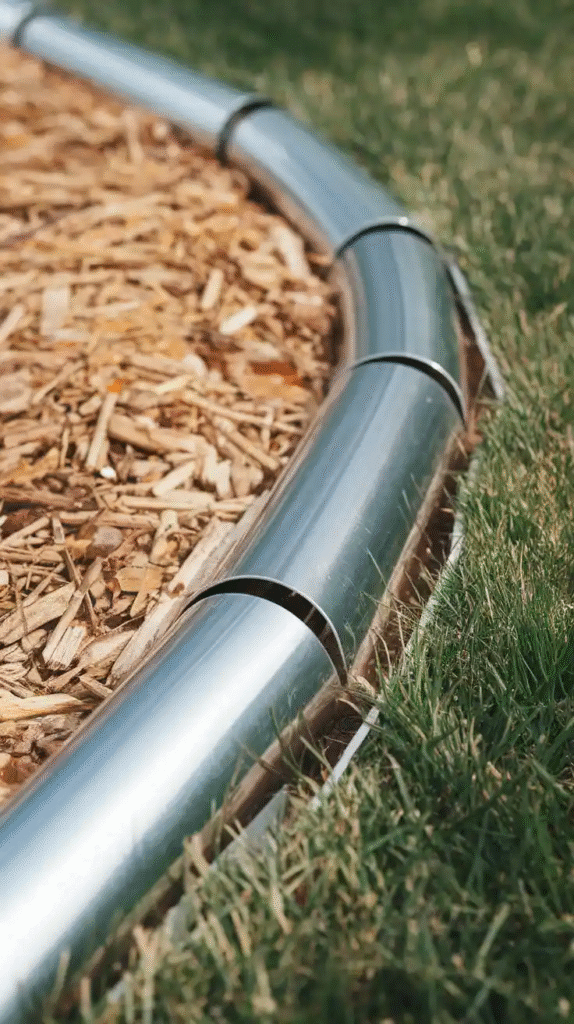
If natural stone is rustic charm, metal edging is minimalist sophistication. Steel or aluminum edging strips are great for modern gardens where clean lines rule the day. They’re nearly invisible from a distance, but they define your beds with military precision.
I once used Corten steel in a modern urban garden project—it started off looking raw and industrial, but after a few weeks, it developed that sought-after weathered rust patina. Gorgeous.
Metal edges are durable, can handle curves with grace, and resist damage from weather, pests, and time. They also allow for easy mowing along the edge, saving you the hassle of trimming.
3. Brick Edging: The Classic You Can’t Go Wrong With
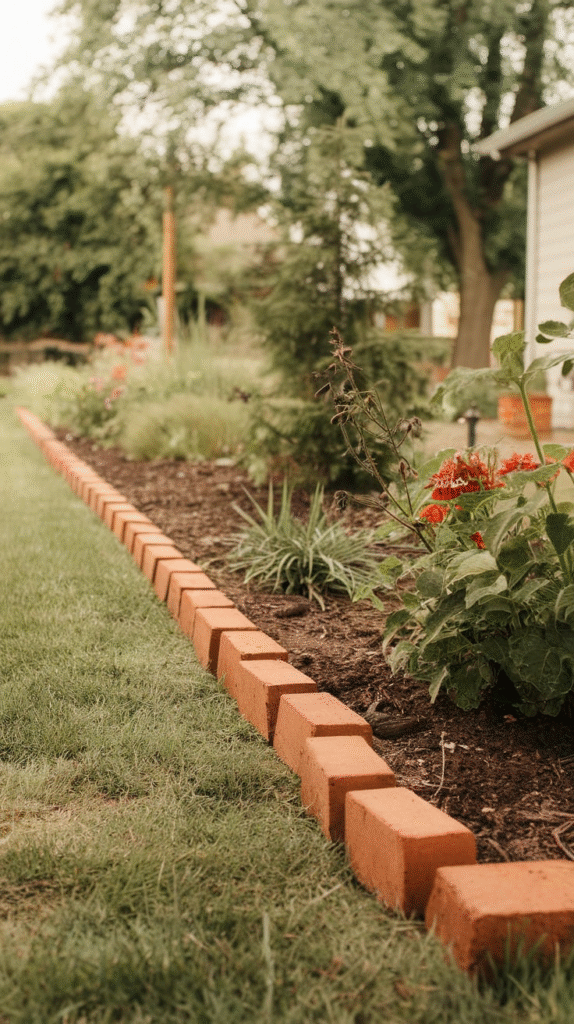
There’s something satisfying about laying bricks in a tidy line. Maybe it’s the symmetry. Or the weight. Or the solid reassurance that this border isn’t going anywhere.
Bricks offer endless versatility—you can lay them flat, set them on edge, tilt them diagonally like teeth, or create eye-catching patterns. I love the “soldier” layout (vertical bricks set side by side) for formal gardens, and the “mower edge” layout (flat and flush with the lawn) for low-maintenance spaces.
They can be new and shiny or reclaimed and aged, depending on your vibe. And the best part? They never go out of style.
4. Wood Edging: Natural, Affordable, and Customizable
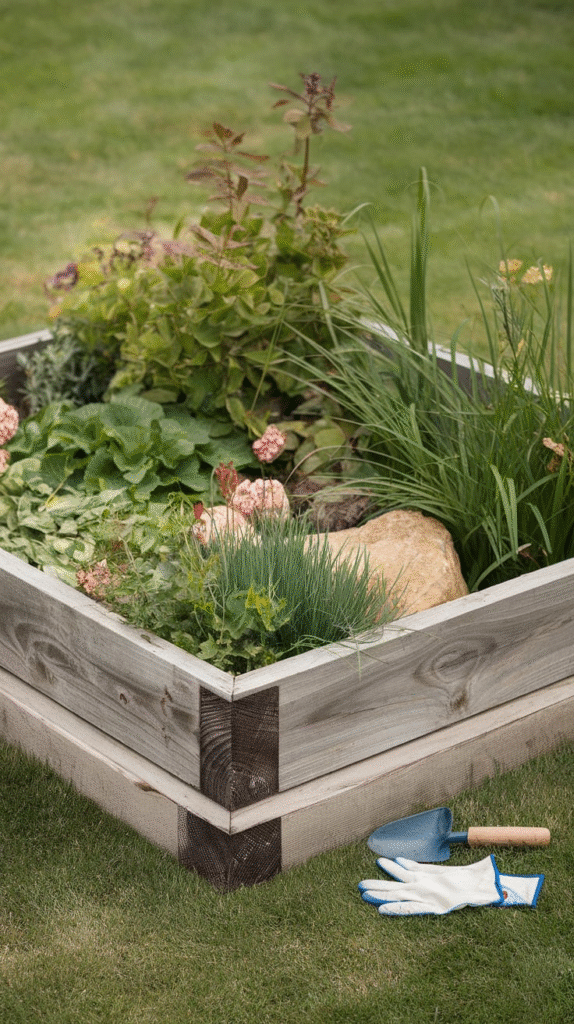
If you’re a DIY soul with a budget and a free weekend, wood edging might be your soulmate. Pressure-treated pine, cedar, or redwood can all work, depending on your aesthetic and climate. You can cut them into short stakes, run them as continuous boards, or create raised beds for a more dramatic look.
Timber edging is incredibly versatile—you can stain it, paint it, or let it gray naturally over time. But one thing to note: wood does eventually decay, especially if it’s untreated and sits in damp soil.
Still, it’s a solid choice for short-term garden projects or beds that need to blend with wooded surroundings.
5. Concrete Curbing: Clean Lines, Permanent Borders
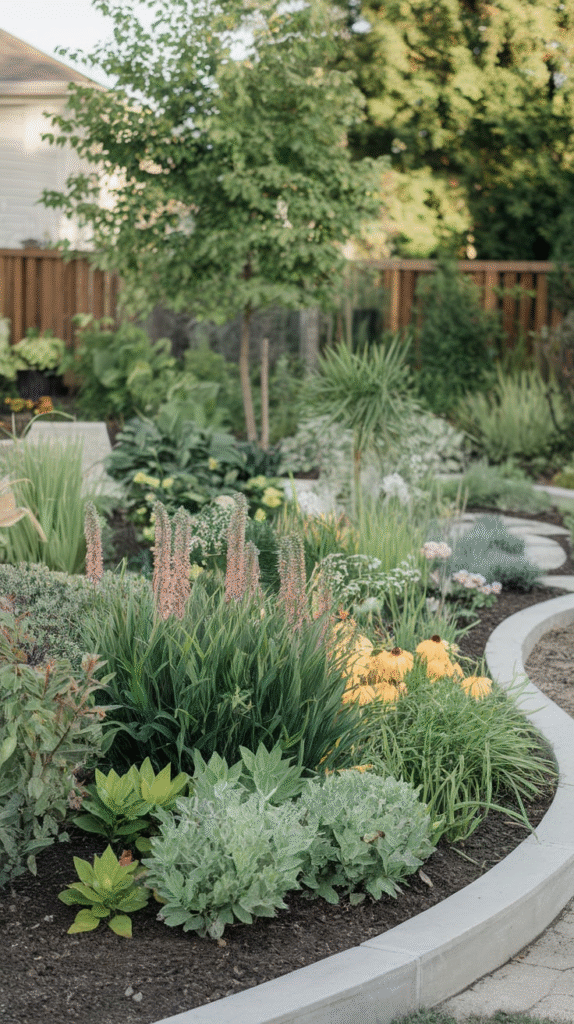
This one’s for those who like their edges set in stone—literally. Concrete edging can be poured in place or installed in pre-formed sections, and it offers one of the most durable and long-lasting solutions out there.
You can keep it simple or get creative—there are molds that mimic brick, stone, or even wood textures. Some landscapers even color or stain the concrete to match other hardscape elements.
I’ve used it in high-traffic yards with kids and pets, and it held up like a champ. No shifting, no crumbling, just a solid barrier that defines your garden with clarity.
6. Recycled Materials: Eco-Friendly and Full of Character
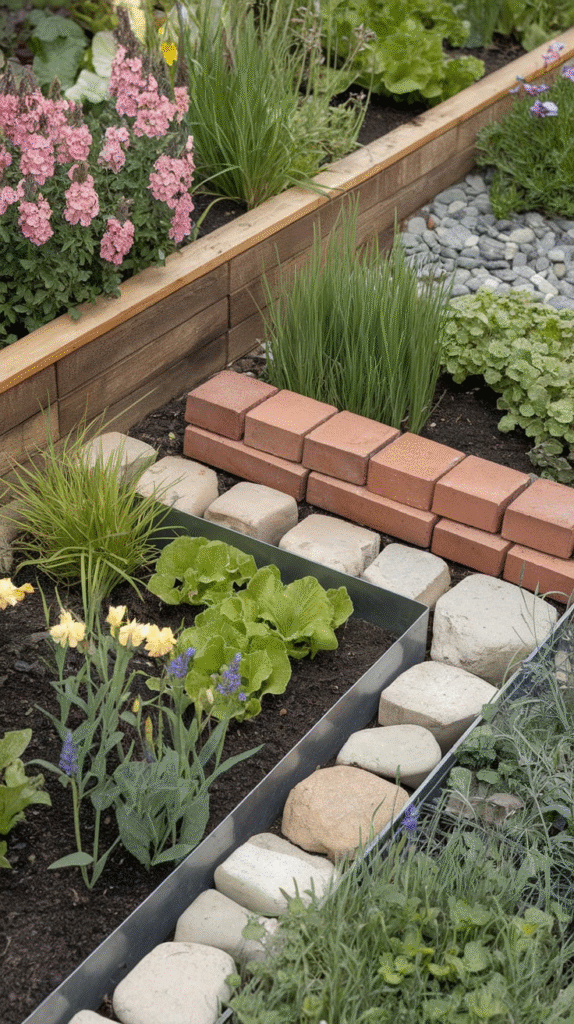
Let’s say you’re the kind of person who sees a pile of discarded wine bottles or old tiles and thinks, “That could be a garden border.” First of all, I salute you. Second, recycled edging is a creative and sustainable way to add personality to your garden.
Old roof tiles, broken ceramics, glass bottles, or salvaged metal panels—anything with structure and charm can be repurposed. I’ve even seen a garden bordered entirely by upright green glass bottles, catching the light like emeralds.
It’s not for perfectionists, but if you love quirky, unexpected designs, this approach rewards your creativity.
7. Plastic Edging: Lightweight and Budget-Friendly

I’ll be honest—plastic edging isn’t the showstopper of the garden world. But it’s cheap, easy to install, and gets the job done. If you’re managing multiple beds or working on a rental property, it’s a practical solution.
Modern versions come with UV-resistant coatings and mimic the look of more expensive materials, like faux stone or metal. They’re also flexible, making them great for curved garden shapes.
It might not win any style awards, but sometimes utility wins the day.
8. Living Edging: Use Plants as Borders
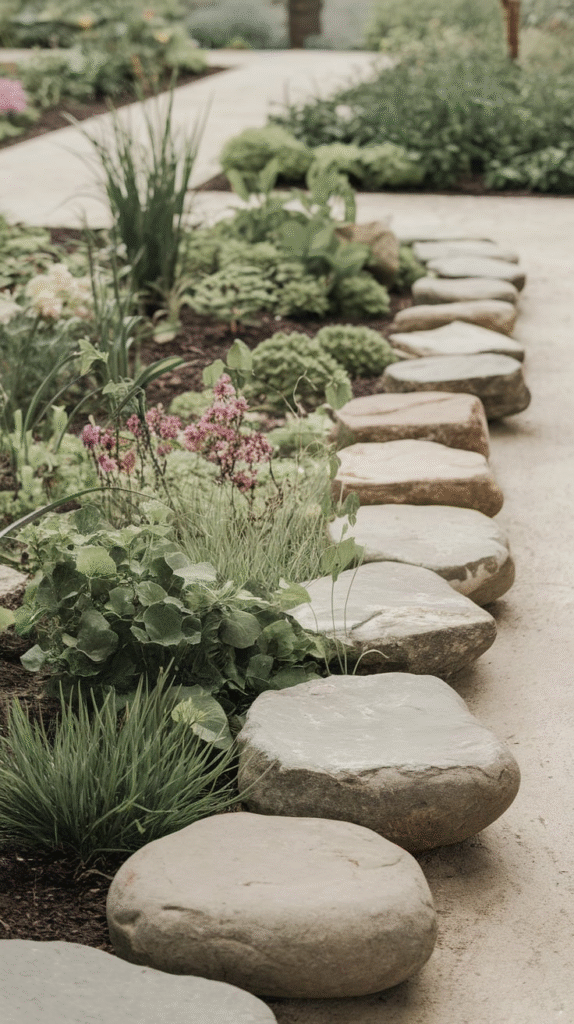
Who says an edge has to be hard? Low-growing plants like thyme, lavender, boxwood, or mondo grass can create beautiful, soft borders that blend into the landscape rather than drawing harsh lines.
I’m a huge fan of herbal edges—not only do they look lush and feel soft underfoot, but brushing past them releases bursts of fragrance that can turn a regular walk through the garden into a sensory treat.
Living edging requires some upkeep, but it’s worth it for the charm and character it adds.
9. Gabion Walls: Industrial Meets Natural
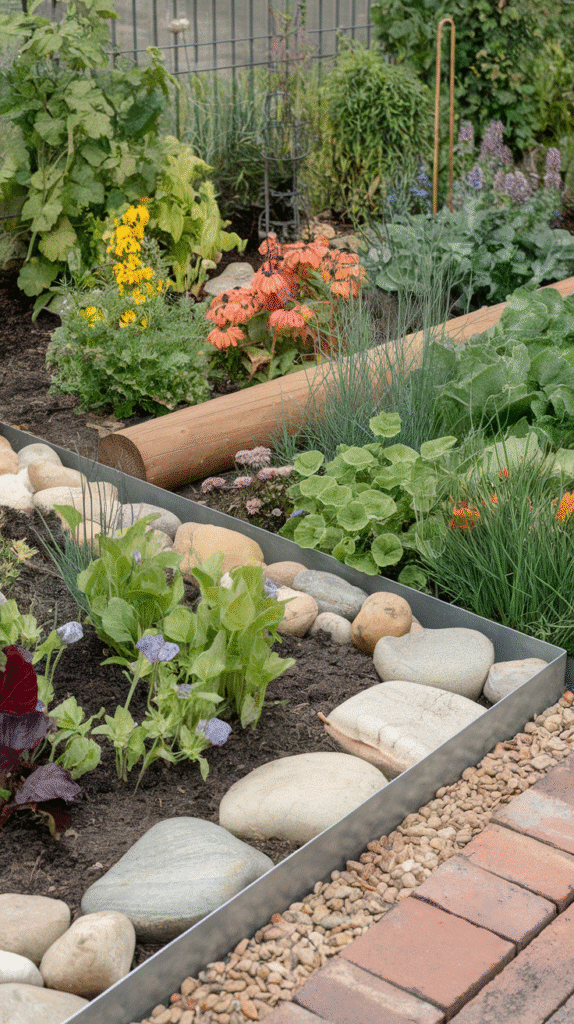
If you like the idea of bold, structural edging, try gabions—wire cages filled with rocks. They’re used in architecture and erosion control, but they can be scaled down into eye-catching garden borders.
You can fill them with stone, brick fragments, glass, or even wood. The contrast between raw metal and natural fill materials makes them visually striking, especially in contemporary or industrial garden settings.
They’re not cheap or subtle, but if you’re going for a statement look, few options are more unique.
10. Terracotta Edging: Warm, Earthy Charm
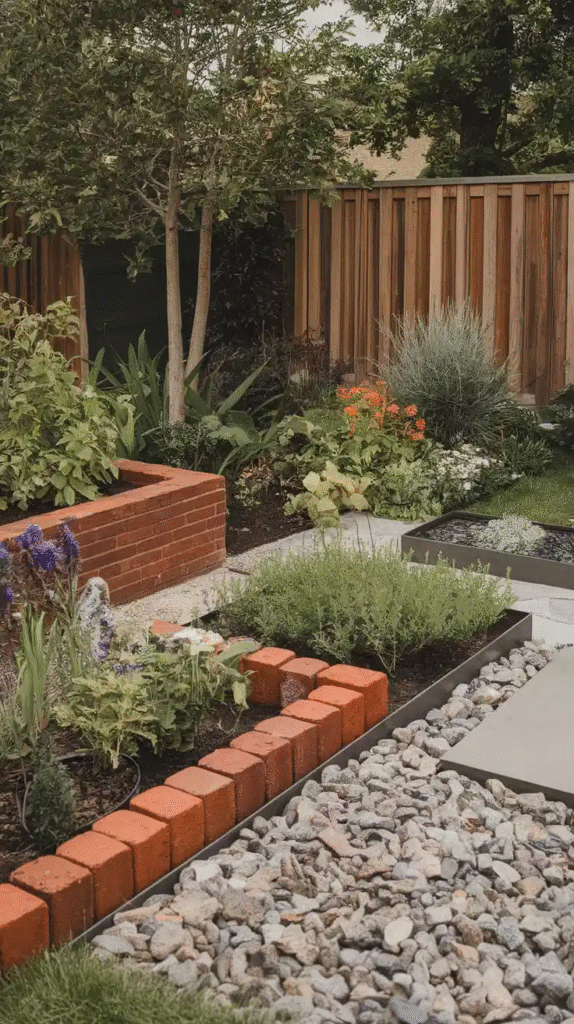
There’s a cozy warmth in terracotta that instantly makes a space feel Mediterranean. Think Tuscan villas, old Spanish courtyards, or Moroccan pathways.
Terracotta tiles or half-round pipes set on end can line a garden bed like a string of clay pearls. They weather beautifully and work particularly well with herbs, succulents, or dry-climate planting schemes.
Just make sure to bring them inside in winter if your area gets freezing temperatures—terracotta is beautiful, but it’s not a fan of frost.
11. Railroad Ties or Sleepers: Strong and Statement-Making
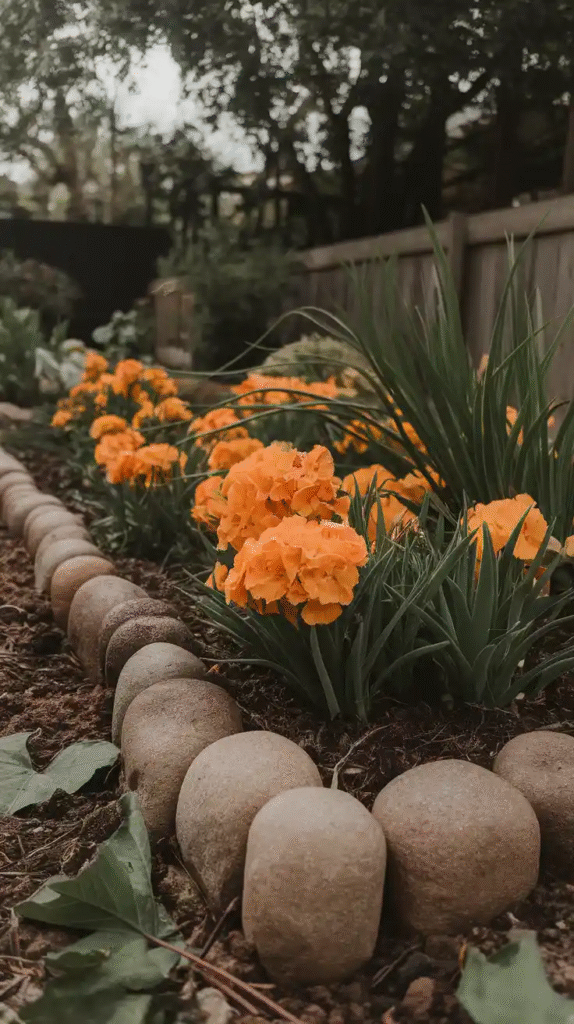
Back in the day, gardeners often repurposed railroad ties for edges and raised beds. These massive timbers are durable, weather-resistant, and have a rugged, industrial-meets-natural vibe.
Modern sleepers come in untreated wood (safer for edible gardens) or composite versions that mimic the look without the risk of creosote. They’re heavy, but that’s the trade-off for structure and stability.
They work especially well in sloped gardens where you need the edge to also function as a retaining wall.
12. Paver Stones: Structured and Subtle
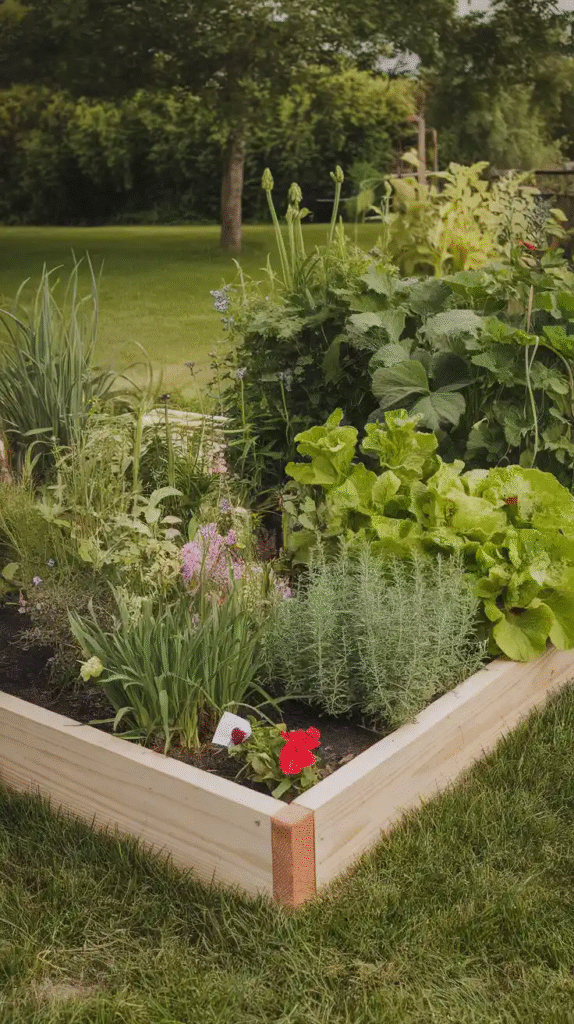
Pavers are like the chameleons of the edging world. Square, rectangular, or even irregularly shaped, they can adapt to almost any style. Set them tightly for a clean border or space them out for a more casual stepping-stone effect.
They come in colors that match or contrast with your patio or pathway, tying the whole space together seamlessly. A great choice for cohesive garden design.
13. Wattle Edging: Old-World Craft Meets Nature

Want to feel like you’re in a countryside cottage from two centuries ago? Try wattle edging—the art of weaving thin branches (like willow or hazel) into a rustic fence.
It’s surprisingly sturdy, full of charm, and entirely biodegradable. Great for raised beds or herb spirals. Just be prepared to refresh it every couple of seasons.
I built one once with my nephew out of pruned apple branches. Not only did it turn out lovely, but the process itself became a memory I treasure.
14. Concrete Pavers with Inlaid Pebbles: DIY Eye Candy
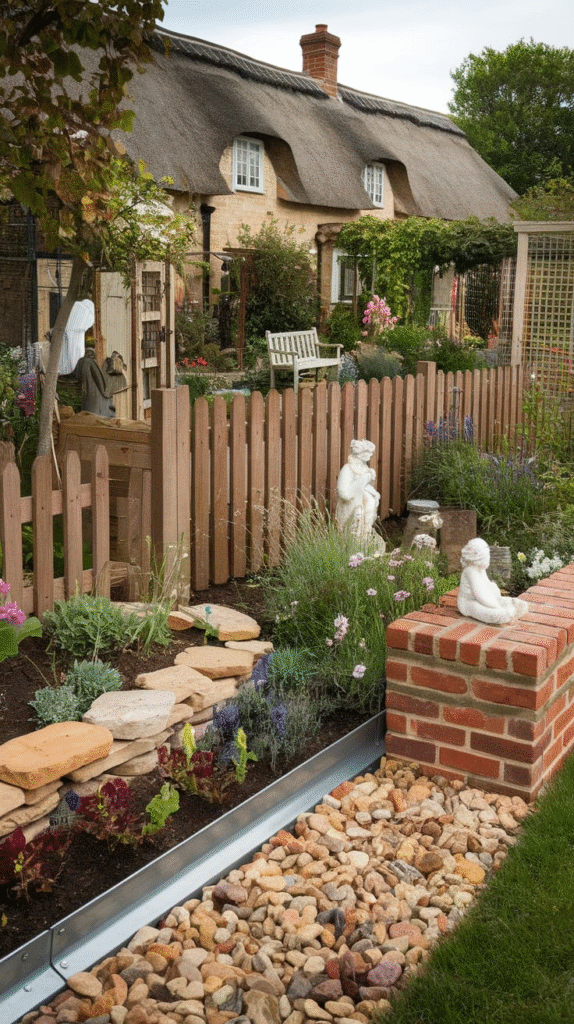
If you want a little sparkle in your garden, mix smooth pavers with decorative gravel or pebbles. The contrast of hard lines and natural textures creates a border that’s both functional and full of visual interest.
You can customize the color palette—warm browns, cool grays, even white river rocks. It’s especially effective in zen gardens or spaces where texture matters more than color.
15. Moss and Brick Combo: A Softened, Aged Look
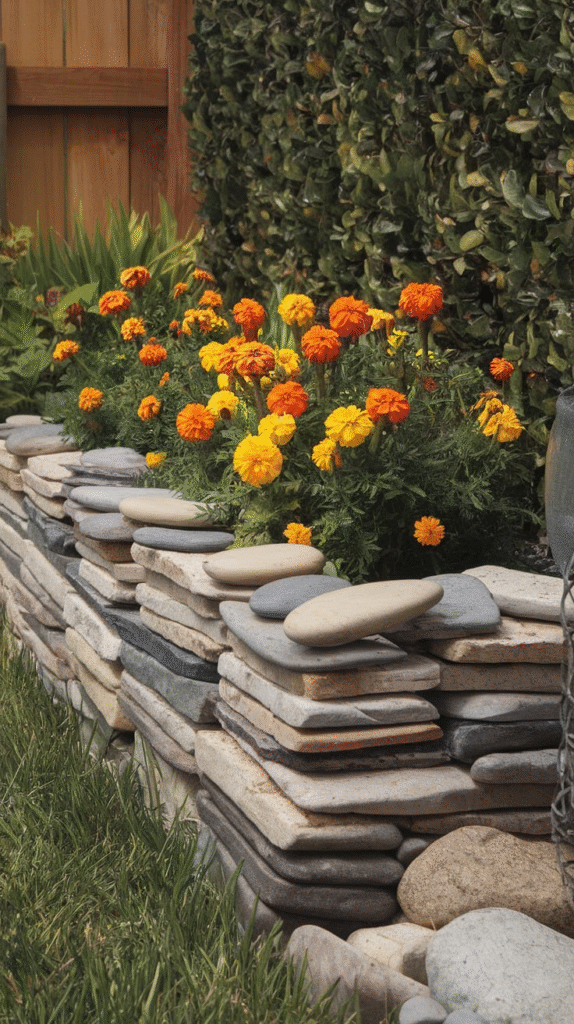
This one is more of an aesthetic than a material: use traditional bricks, but allow moss to take hold. It softens the rigidity and gives your garden bed a lived-in, romantic feel. This edging looks like it’s been there forever—and that’s the magic.
Moss encourages biodiversity, holds moisture, and thrives in shady, damp corners. Let it spread, and you’ll be rewarded with a whisper-quiet, fairytale vibe that no modern material can replicate.
Conclusion
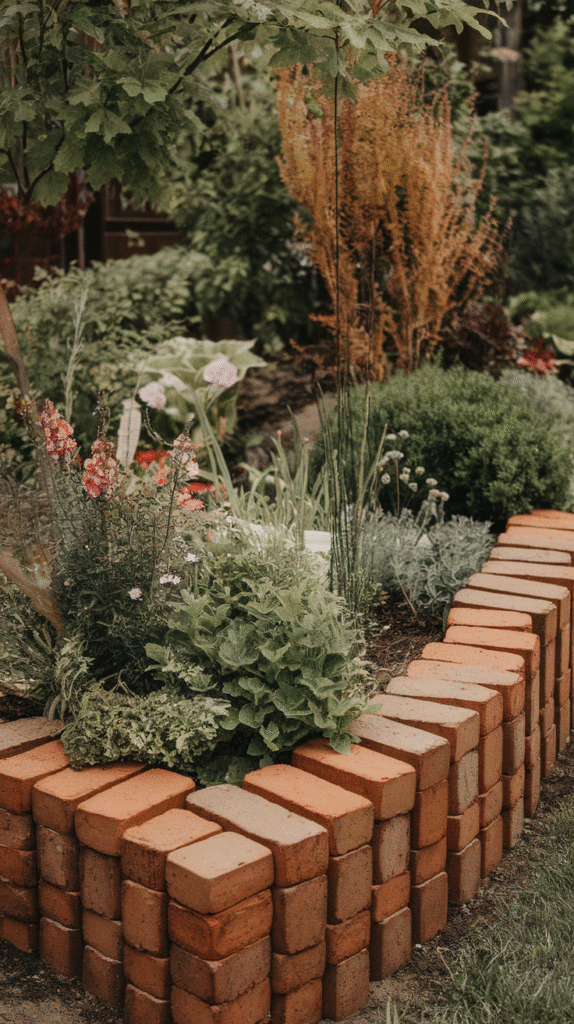
Every garden has a story, and your choice of bed edging helps tell it. Whether you’re the minimalist with sleek steel lines or the wild-hearted artist weaving willow branches, your borders define the rhythm and structure of your space.
I’ve edged with stone, wood, even beer bottles once (don’t ask), and each one had a personality that reflected the mood of that moment in my gardening journey.
So take your time. Try things. Make mistakes. Let the mulch spill over once or twice if it helps you find the right fit.

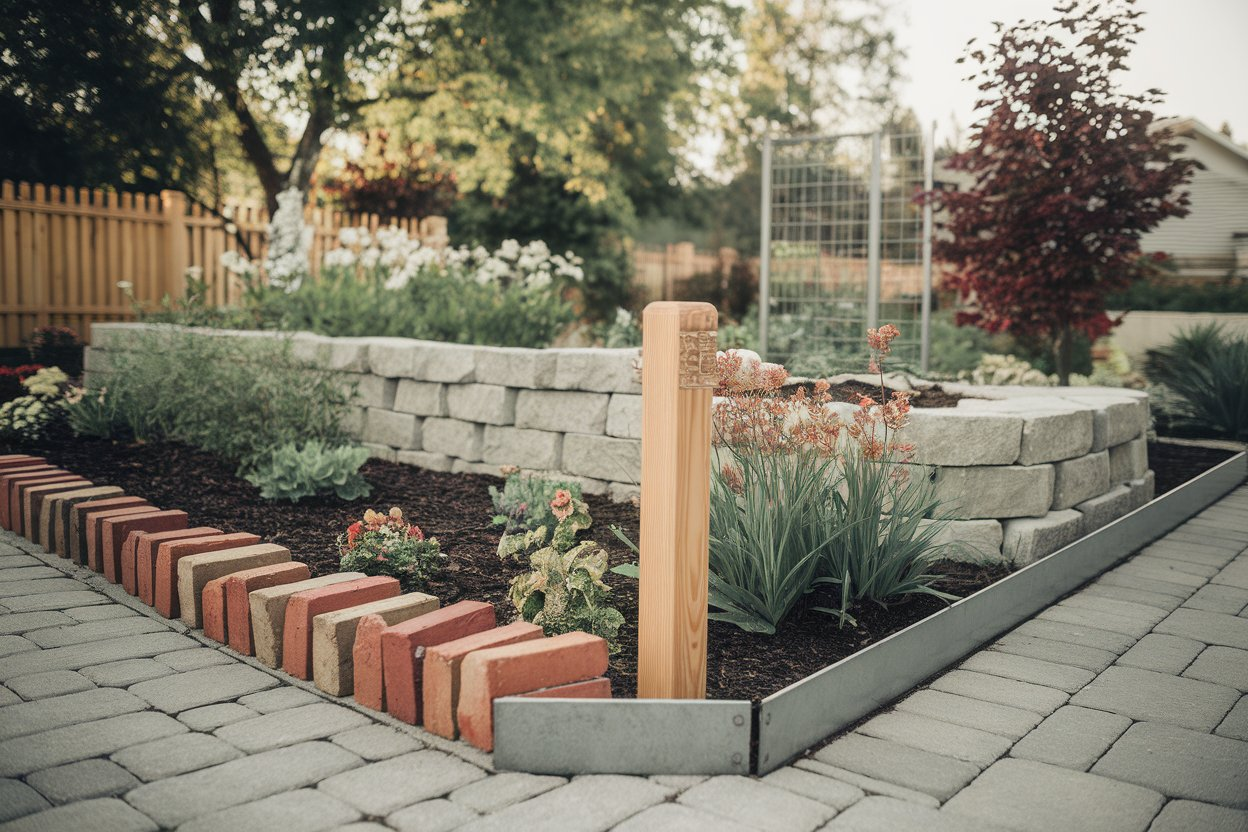
Leave a Reply